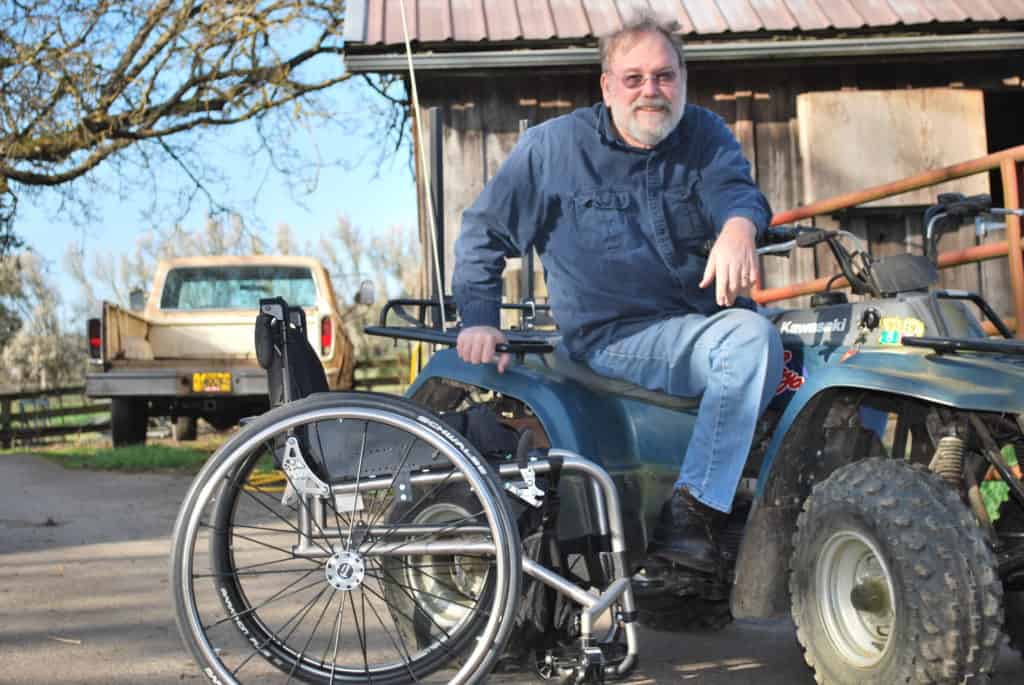
I’ve been sentenced to a six-month journey with a stage IV ischial pressure sore, but I don’t want to do the time.
I’d rather blast off from this black hole and return to the land of light ASAP. Realistically, though, to get there I’ll need the combined expertise of a team of medical professionals, a healthy dose of hope, and the support of family, friends and colleagues. In the face of possible complications and setbacks, I’ll need to stay positive and persevere.
My chosen consulting physician, a friend who lives distant from me and offers advice for free, has prepped me for the journey. I am lucky to know him. He tells me the wound that perplexes my nurses is the solution, not the problem. “You have a bone infection,” he says, somehow divining what others do not yet know. “Your wound is a pathway — a safe exit for the infection — to preserve your life. Your body has intelligence and knows what to do. Trust it.”
I take his advice. It is comforting to know that my body is better prepared than I am, as if it is already programmed to carry the battle on its own. A second doctor, my primary care physician, who knows my complete medical history and whom I also respect, then tells me, “You are at very high risk.” I don’t ask him to elaborate.
He orders an MRI to confirm or deny osteomyelitis.
When I enter the diagnostic imaging area, I am greeted by the imaging tech, a small friendly woman. She tells me nothing metallic is allowed in the room and asks lots of questions. I have a prosthetic leg, stents in my arteries, and my sternum was laced together with stainless steel wire during my open heart surgery 12 years ago. “Does this mean I’ll explode?” I say, joking.
She laughs. “No,” she says, “but you’ll definitely have to leave your wheelchair outside.”
Inside the chamber, she injects me with gadolinium, a contrast liquid that will illuminate the pelvic area. Her friendly banter veils her concern. I can tell she knows I have a serious problem. As predicted, an intense area of edema from the body-versus-bacteria battle lights up the bone marrow.
Later, I try to imagine how the bacteria got there. I had a similar wound in the same place more than 40 years earlier. “Long ago that infection was tamed,” says my doctor friend. “The bacteria went into remission, was contained within the bone marrow, and your wound was able to heal. Now it has reactivated. You must attack it and force it back into dormancy.”
I envision the journey before me. The first leg will begin with a trip to Bonetown — a bone biopsy. Then a white-coated lab technician will identify the intruders, the prescribing pharmacist will provide the ammunition, nurses will take up arms and lock and load, and the intravenous invasion will be launched.
After that comes the surgeon, an artist/sculptor whose medium is flesh. Known mostly for building or reducing breasts and making wrinkles disappear, the surgeon must carefully layer a sinkhole in my body with native flesh and scant muscle, mold it and close it.
Then, for me, the hard part: the journey back, imprisoned in bedspace, hoping for lasting healing and a successful re-entry. This is where physiology meets psychology. Everything must be managed successfully, including surviving isolation and staving off depression, which I know from previous long convalescences tends to grow in the dark.
As I prepare for what lies ahead, fear rises. Could I lose this battle? My research tells me 60,000 people die each year in the United States from pressure sore complications. Most of them are elderly. At 72, have I used up my good fortune? Will I go the way of others before me who perished when the battle heated up, spilled over into their bloodstream and invaded their bodily organs?
I brace myself and pray. I will do everything possible to avoid that outcome. I have plans, wishes, dreams. But sepsis has its own agenda.
In the cosmos, planets spin in their orbits, stars pump out energy, and gravitational forces hold everything in place, as if by design. May it be so with my journey.
This is the first installment in Journey to the Far Side of Tomorrow, a six-part blog series chronicling our editor Tim Gilmer’s unexpected immersion into the world of flap surgery and all it entails. Look for the second part in early March.
Support New MobilityWait! Before you wander off to other parts of the internet, please consider supporting New Mobility. For more than three decades, New Mobility has published groundbreaking content for active wheelchair users. We share practical advice from wheelchair users across the country, review life-changing technology and demand equity in healthcare, travel and all facets of life. But none of this is cheap, easy or profitable. Your support helps us give wheelchair users the resources to build a fulfilling life. |



I am so happy to have found your story and hope you are much better these days. I am recovering now from flap surgery.